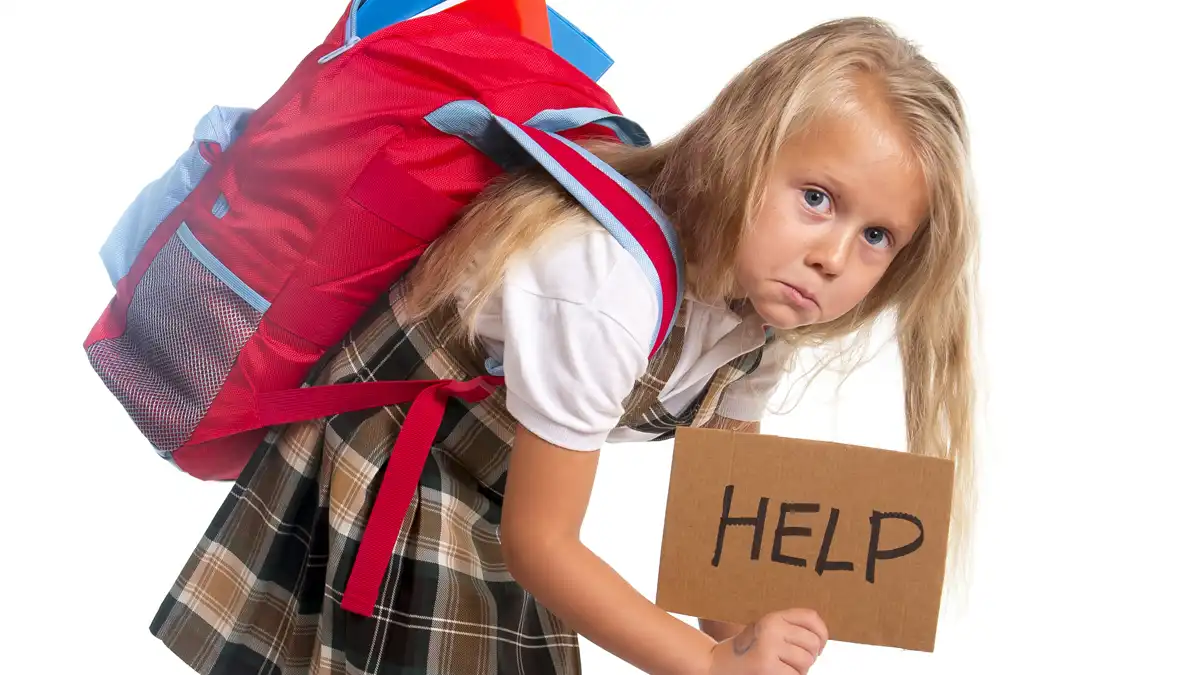Heavy or improperly worn backpacks can not only be a literal pain in the neck, back and shoulders, they can also lead to poor posture. It’s such a significant issue that the American Occupational Therapy Association (AOTA) has designated every third Wednesday of September as National School Backpack Awareness Day to educate parents, teachers and kids about the potential for adverse health effects from overloaded or incorrectly worn bookbags.
Parent and Mount Pleasant resident Andrea Maier said heavy backpacks are “absolutely” a concern and a struggle. Maier has two children, a daughter who is a rising eighth grader at Cario Middle School and a son who attends Wando High School. For her kids, bookbag weight started to become burdensome in middle school. Chromebooks, lunchboxes and water bottles are generally the heaviest items, according to Maier.
It’s been even more challenging for her daughter, who was injured in a car accident in October 2022. Carrying around a heavy bookbag has only exacerbated back and shoulder pain sustained in the wreck.
“It made her recovery that much harder,” explained Maier.
While they try to minimize what she brings back and forth from school, items such as the water bottle and lunchbox are always used. Her kids must also tote around extra bags for classes like PE.
“Everything just adds weight,” stated Maier. “It just seems like they always need something.”
Her daughter has access to lockers, but the schedule moves at a frenetic pace and the lockers are small, she said. At Wando, the students don’t have lockers and her son must lug around everything.
Maier talks to her children about proper posture and ensuring bookbag straps are appropriately tightened, but students often loosen them at school because they worry about how it looks. She buys her kids more durable packs like North Face, and they attempt to distribute the weight evenly, but items such as water bottles go on one side, so it’s typically not distributed well.
Her daughter complained about bookbag pain even before the accident, but especially after because it aggravated those prior injuries. She has experienced soreness at the base of her neck and upper shoulders.
Hefty packs only add to the list of parental anxieties as the new school year approaches, but there are scientifically-backed recommendations to help ease the bookbag burden.
Backpack Safety Guidelines
Dr. Matthew Murrin, D.C., of Chiropractic USA, said he treats a lot of children with backpack-related pain and soreness such as neckaches and backaches. He also speaks at schools to raise awareness of backpack safety. Dr. Murrin shared some medical guidelines on how to address the issue of heavy or improperly worn backpacks and avoid or reduce injury risk.
The first step is for parents to choose the right size bookbag. It needs to be no more than three-fourths the length of the child’s back. The pack should also have shoulder straps and ideally a waist strap.
“A waist strap takes pressure off the lower back,” advised Dr. Murrin. If a child is bent over and leaning forward when wearing their bookbag, it’s a clear indication it’s too big for them, which can adversely affect the spine, he said.
Another important tip is packing the bag right. The maximum weight should not exceed 15 percent of a child’s body weight. For a 100-pound kid that means no more than 15 pounds. That excessive weight adds up, especially over time with repetitive lifting throughout a school day, and can harm neck and shoulder joints, noted Dr. Murrin.
Proper weight distribution helps, too. Heavier items such as textbooks or Chromebooks should be placed closer to the child’s back. This is where the waist strap comes in because it keeps weight centered, much like it does for loaded hiking backpacks, he explained. “That why the strap really matters. It keeps weight together and closer to your back.”
How kids lift their backpack also matters. You can’t just blithely sling it over one shoulder. To put it on safely and properly, face the pack, bend at the knees and use both hands to lift it up at one time.
“Over the years, what I’ve seen is the polar opposite,” asserted Dr. Murrin of how children lift and wear their packs at school. He added that while many kids ignore backpack safety advice because it’s not cool and prefer the one shoulder look, when it comes to heavy or improperly worn bookbags, the science speaks for itself. “You can control it and fix it. The best thing is to educate them on the right way to do it. You’re saving your spine.”
Backpack Safety Tips
- Buy ergonomic backpacks geared specifically toward the size of the child. It should be no more than three-fourths the length of the child’s back.
- A loaded backpack should not exceed 15 percent of the child’s weight.
- Make sure the pack is adjusted and worn properly, position the pack in the center of the back.
- Never wear your backpack over one shoulder. Use both shoulder straps to keep it a snug fit and reduce pain or injury risk.
- Buy a pack with sufficient padding in the back for additional comfort.
- Get a backpack with a waist strap to distribute weight and keep the pack from sliding on the back.
- Buy a bookbag with multiple compartments to help distribute weight more evenly. Pack the heaviest items lower and to the back of the pack.
- Leave extra items that aren’t necessary behind to avoid adding excess weight.
When Lifting the Backpack Follow These Guidelines:
- Face the backpack before you lift it.
- Bend at the knees.
- Using both hands, check the weight of the backpack by using your legs and not your back.
- Place the backpack up on a solid surface before putting it on.
- With your back to the backpack, carefully put one shoulder strap on at a time and be sure to wear both shoulder straps.
Additional sources: https://www.therapeuticassociates.com/backpack-safety/ https://www.straitexerciseandwellnesscenter.com/backpack_safety.php
By Colin McCandless







